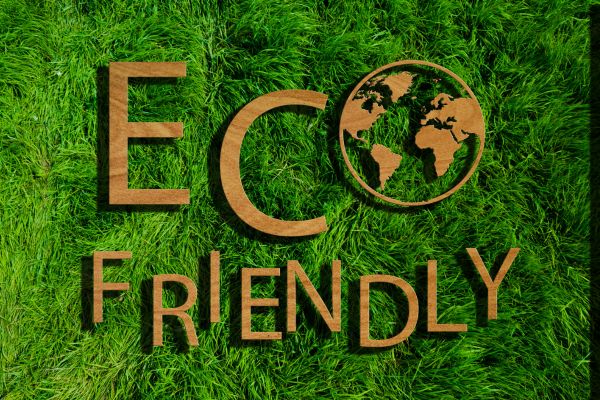Fashion is exciting. It’s fun, expressive, and constantly evolving. But let’s be real—behind all the glitz and glam, the fashion industry has a serious environmental problem. From water-hungry cotton fields to synthetic fabrics that shed microplastics, the cost of looking good often comes at the planet’s expense. The good news? A shift is happening. More brands and conscious consumers are embracing eco-friendly fashion materials, and it’s paving the way for a more sustainable future in style.
Why Eco-Friendly Fashion Materials Matter
Every outfit we buy is part of a much bigger picture. Traditional fashion relies heavily on resource-intensive and pollutive processes. Cotton, for instance, may look harmless, but conventional cotton farming guzzles tons of water and requires pesticides that damage ecosystems. Then you have polyester, which is basically plastic—derived from fossil fuels and contributing to microplastic pollution every time you toss your clothes in the wash.
Switching to eco-friendly fashion materials means rethinking how we produce, wear, and even recycle clothing. These fabrics are made with the environment in mind, often using fewer chemicals, less water, and renewable resources. And honestly, they’re not just “good for the planet”—they feel good, look stylish, and often last longer too.
Organic Cotton: A Breath of Fresh Air
Cotton is everywhere in our closets, but organic cotton is its cleaner, greener sibling. Unlike conventional cotton, it’s grown without harmful pesticides and synthetic fertilizers. That means healthier soil, safer working conditions for farmers, and clothing that’s much gentler on sensitive skin.
The thing is, organic cotton still requires water, but because it’s often grown in regions that rely on rainfall rather than irrigation, its footprint is way lighter. Plus, brands using organic cotton usually emphasize fair trade and ethical practices, so you’re not just helping the environment—you’re supporting communities too.
Hemp: The Overachiever of Fabrics
Hemp might just be the unsung hero of eco-friendly fashion materials. It grows like a weed (literally), needs minimal water, and doesn’t require pesticides to thrive. Beyond that, hemp actually improves soil health and absorbs more CO₂ than most crops.
As a fabric, hemp is incredibly durable yet softens with wear, meaning your favorite hemp t-shirt or jeans could outlast most fast-fashion alternatives. And because hemp resists mold and UV rays, it’s as practical as it is sustainable. Honestly, it’s hard not to love this one.
Bamboo: Soft and Sustainable (When Done Right)
Bamboo has become a buzzword in sustainable fashion—and for good reason. It grows fast, requires no replanting, and uses little water. But here’s the catch: not all bamboo fabric is created equal. Some bamboo is processed into viscose using harsh chemicals, which kind of defeats the purpose.
The better option is mechanically processed bamboo, often labeled as “bamboo linen.” It’s breathable, soft, and biodegradable. So, if you’re buying bamboo clothing, make sure the brand is transparent about its sourcing and production methods. Otherwise, you might just be buying into greenwashing.
Linen: The Timeless Classic
Linen has been around for thousands of years, and it’s still one of the most eco-friendly fabrics available. Made from the flax plant, linen grows with little water, minimal pesticides, and can thrive in poor soil conditions where other crops would fail.
It’s lightweight, breathable, and perfect for summer wardrobes. Yes, it wrinkles easily, but let’s be real—that’s part of linen’s charm. It’s a fabric that embraces imperfections, which makes it kind of poetic in a world chasing “perfect” fast fashion.
Recycled Fabrics: Giving Old Clothes New Life
One of the most exciting shifts in sustainable fashion is the use of recycled textiles. From recycled polyester (made from PET bottles and old garments) to upcycled denim, these materials help reduce waste and cut down on the demand for virgin resources.
Recycled polyester, for example, keeps plastic bottles out of landfills and oceans. While it still sheds microplastics when washed, it’s a better alternative than producing new polyester from fossil fuels. The key is balance—choosing recycled options when possible and washing them in microplastic-catching bags.
Innovative Alternatives: The Future of Fashion
What’s really exciting is how science and creativity are pushing fashion into brand-new territory. Today, we have fabric innovations that sound like they’re straight out of sci-fi.
Take Piñatex, made from pineapple leaf waste, or Apple Leather, created from apple industry scraps. There’s even mushroom leather (mycelium) that mimics the look and feel of animal leather without the environmental or ethical baggage. These next-gen eco-friendly fashion materials are not just sustainable, they’re redefining what luxury and innovation look like.
How to Build a Greener Wardrobe
It’s not just about what brands produce—it’s also about how we choose to buy and wear. Opting for clothing made with eco-friendly fashion materials is a solid step, but pairing that with conscious shopping habits makes the impact even bigger.
Ask yourself: Do I really need this? Can I choose a sustainable brand instead of a fast-fashion giant? Could I thrift something instead of buying new? The answers to those questions often guide us toward a wardrobe that’s not just stylish, but also mindful.
The Bottom Line
At the end of the day, fashion should make us feel good—not guilty. And shifting to eco-friendly fashion materials is one of the most straightforward ways to reduce the environmental footprint of our wardrobes. From hemp and organic cotton to futuristic fabrics like mushroom leather, the options are expanding every year.
The thing is, every purchase we make is like casting a vote for the kind of world we want to live in. Do we want one where rivers run with dye waste and landfills pile up with synthetic clothes? Or one where fashion celebrates both creativity and responsibility?
Choosing eco-friendly fabrics might seem like a small step, but stacked together, those steps create real change. And that’s the kind of fashion statement worth making.

